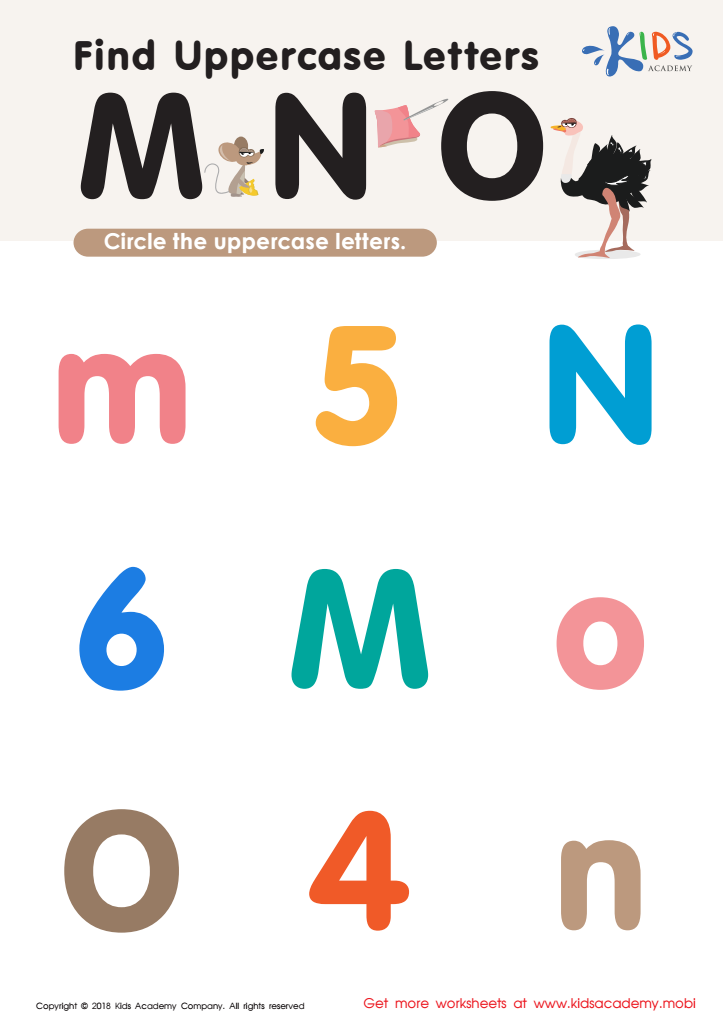Uppercase identification Normal Alphabet Worksheets
5 filtered results
-
From - To
Discover our engaging Uppercase Identification Normal Alphabet Worksheets, designed to help young learners master their uppercase letters. Perfect for preschool and kindergarten students, these worksheets provide fun activities that enhance letter recognition skills. Each worksheet features colorful illustrations and interactive exercises that make learning exciting and effective. Students will practice identifying, tracing, and coloring uppercase letters, building a strong foundation for reading and writing. With various levels of difficulty, these worksheets cater to different skill levels, ensuring every child can thrive. Download and print these valuable resources for a fun, educational experience that encourages early literacy development today!


Find Uppercase Letters Worksheet


Find Uppercase Letters J, K, and L Worksheet


Find Uppercase Letters A, B, and C Worksheet


Find Uppercase Letters V, W, X Worksheet


Find Uppercase Letters M, N, and O Worksheet
Uppercase letter identification plays a crucial role in early literacy development, making it vital for parents and teachers to prioritize this skill. Recognizing uppercase letters is foundational for reading and writing, as they curb confusion in differentiating words and sentences. Uppercase letters often denote the beginning of sentences or proper nouns, and familiarity with these symbols helps children understand the structure of text.
Moreover, in our increasingly print-rich environment, children encounter uppercase letters in signs, logos, and titles, making their recognition essential for effective communication and navigation through their world. Mastery of uppercase letters serves as a springboard into lowercase letters, fostering confidence in phonics and spelling.
Furthermore, teaching uppercase identification can enhance a child's motor skills through practice in writing. Engaging in activities that involve coloring, tracing, and recreating letters supports fine motor development while making learning interactive and enjoyable.
Involving parents in this learning process creates a supportive home environment where children can thrive. When parents and teachers work collaboratively to emphasize uppercase identification, they empower children with essential literacy skills that will serve as the building blocks for future academic success. Ultimately, prioritizing uppercase identification promotes well-rounded, competent, and confident readers and writers.
 Assign to My Students
Assign to My Students













